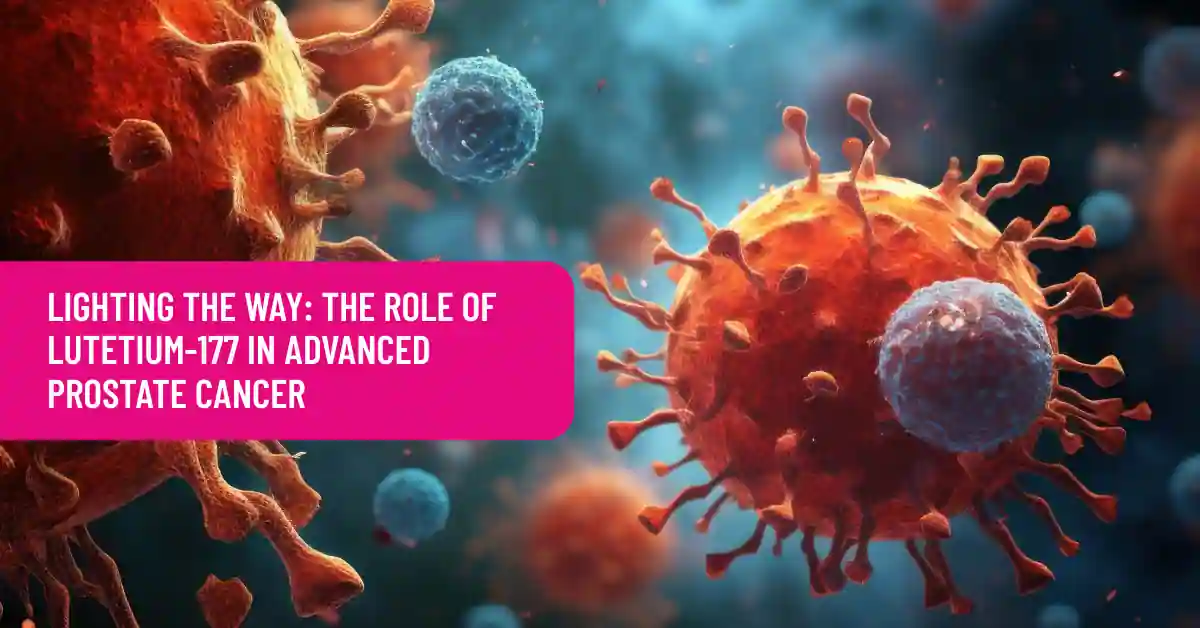Ahead of a Real-World Data Session at VIPOS 2025
In recent years, the management of advanced prostate cancer has undergone a quiet revolution, one that’s as precise as it is powerful. At the heart of this transformation is a form of targeted therapy known as radionuclide therapy, and one agent in particular is garnering global attention: Lutetium-177 PSMA.
As we look forward to VIPOS 2025, one of the key highlights will be a dedicated session presenting real-world evidence on Lutetium-177 therapy in metastatic castration-resistant prostate cancer (mCRPC), a timely spotlight on a therapy changing lives far beyond the clinical trial setting.
What Is Radionuclide Therapy?
For the uninitiated, radionuclide therapy is a type of precision treatment that uses radioactive isotopes to target cancer cells from within. Unlike external radiation therapy, which beams energy from outside the body, radionuclide therapy delivers radiation directly to cancer cells via molecules designed to seek out specific targets, like a heat-seeking missile homing in on a locked location.
Lutetium-177 and PSMA: A Targeted Duo
In prostate cancer, that target is Prostate-Specific Membrane Antigen (PSMA), a protein that is abundantly expressed on the surface of most prostate cancer cells, especially in advanced stages. Lutetium-177, a beta-emitting radioisotope, is chemically linked to a PSMA-binding molecule. Once injected into the body, this combination binds to PSMA-expressing cells and delivers targeted radiation, killing the cancer from the inside while largely sparing healthy tissue.
Why It Matters
For patients with mCRPC, where the disease has spread despite hormone therapy and chemotherapy, treatment options have traditionally been limited. Lutetium-177 PSMA therapy offers a new lease of hope. Clinical trials like the VISION study have demonstrated improved survival rates, delayed disease progression, and importantly, better quality of life.
But clinical trials are only one part of the story. What happens in the real world, outside of tightly controlled study environments matters just as much. That’s why the upcoming VIPOS 2025 session on real-world data from Indian and global centers using Lutetium-177 PSMA is generating keen interest across both medical and patient communities.
What to Expect at VIPOS 2025
The session will bring together nuclear medicine specialists, oncologists, and urologists, sharing real-world insights on:
* Patient selection and timing for Lutetium therapy
* Response patterns and duration of benefit
* Safety profile in practical settings
* Challenges in accessibility and infrastructure
* Patient narratives on quality of life improvements
This data will offer a broader, more nuanced perspective on how Lutetium-177 is shaping prostate cancer care, especially in regions with diverse healthcare setups.
A Crossroads of Innovation and Compassion
The journey of Lutetium-177 therapy marks a convergence of cutting-edge science and patient-centric care. It’s not just about shrinking tumors but about giving patients more meaningful time, more comfort, and more dignity in their fight.
As we gather at VIPOS 2025, this session promises to be more than a clinical update. It will be a reflection of progress, a platform for collaboration, and a testament to how far we’ve come in turning science into survival. Stay tuned, and if you’re attending the conference, don’t miss this landmark session on real-world outcomes of Lutetium therapy in prostate cancer. The future of oncology is not just experimental, it’s becoming beautifully pe


